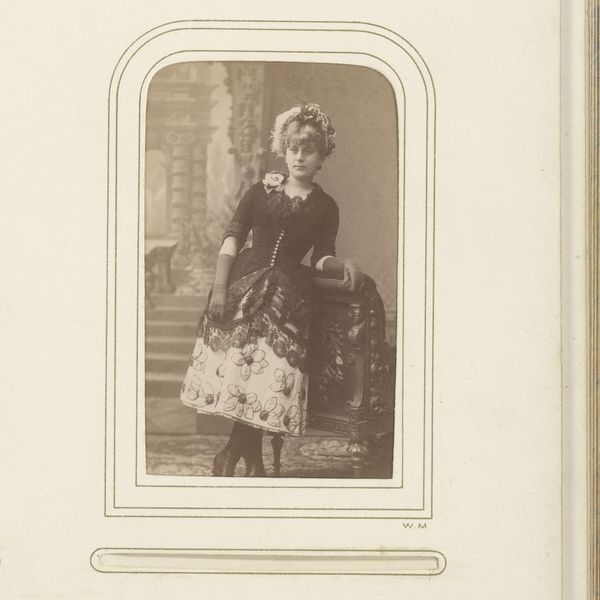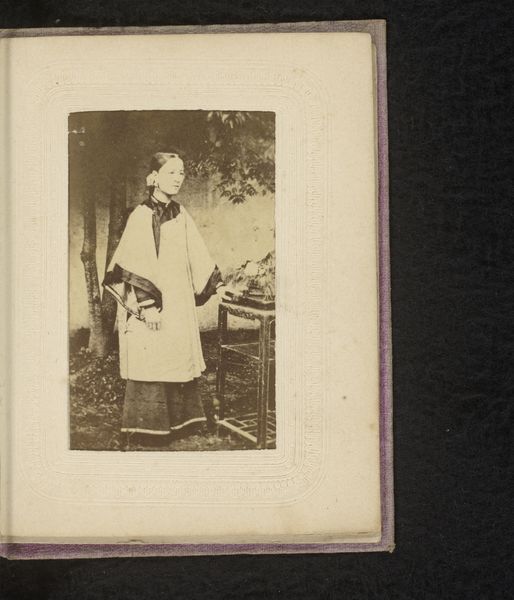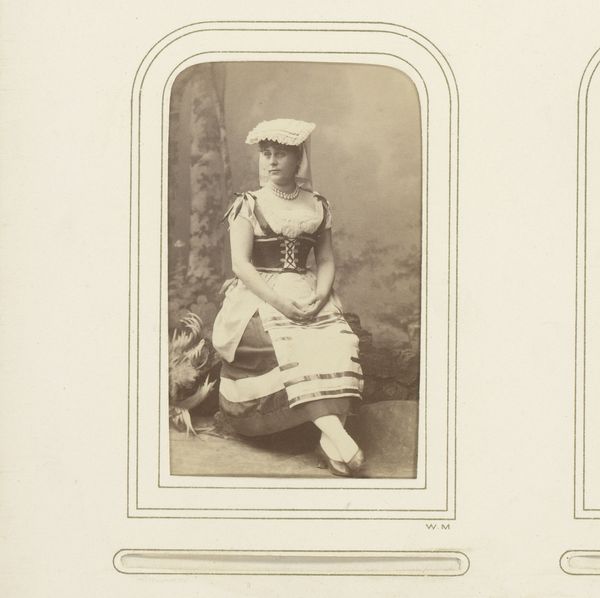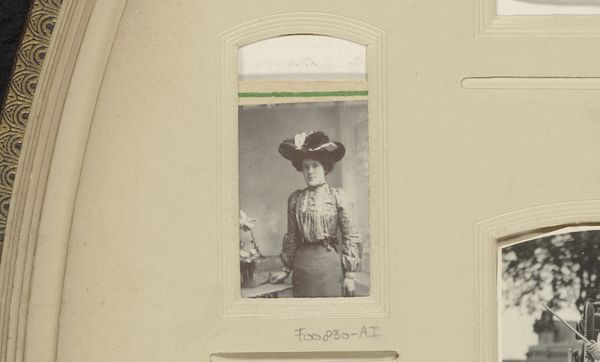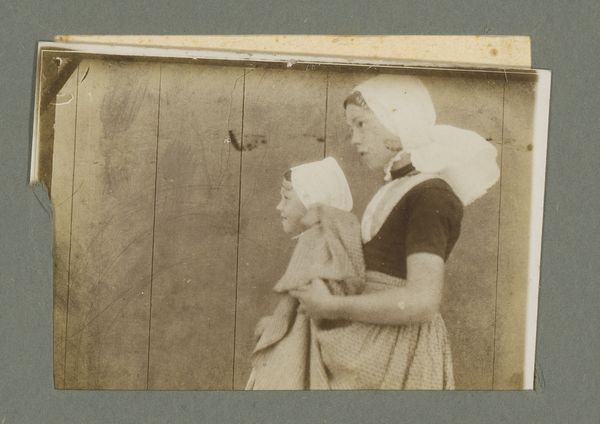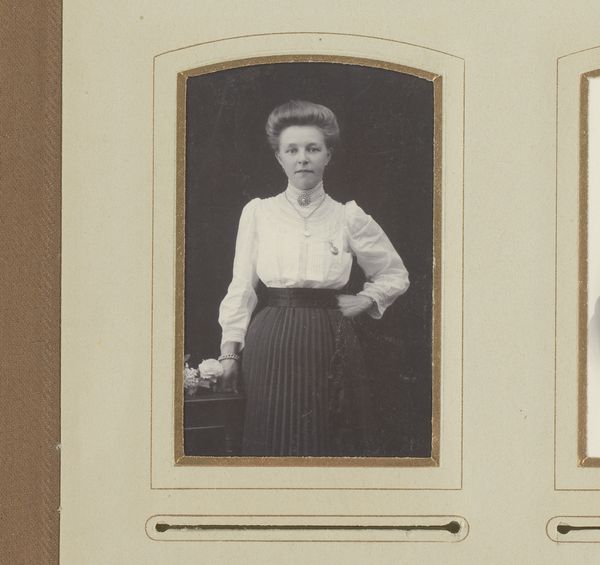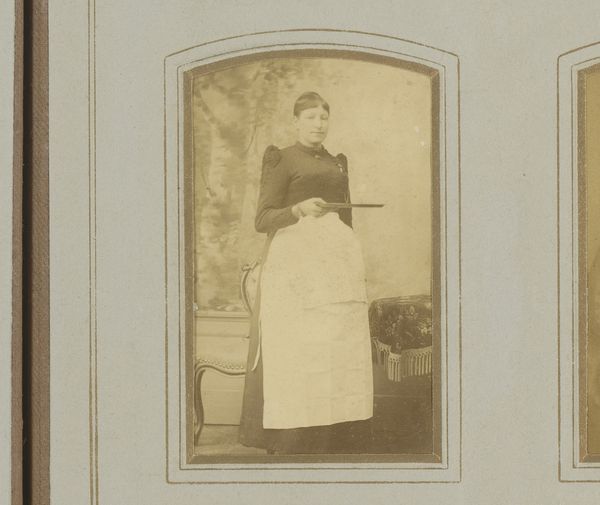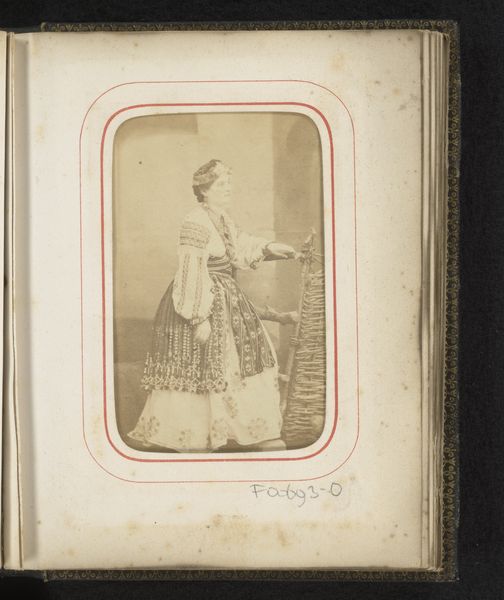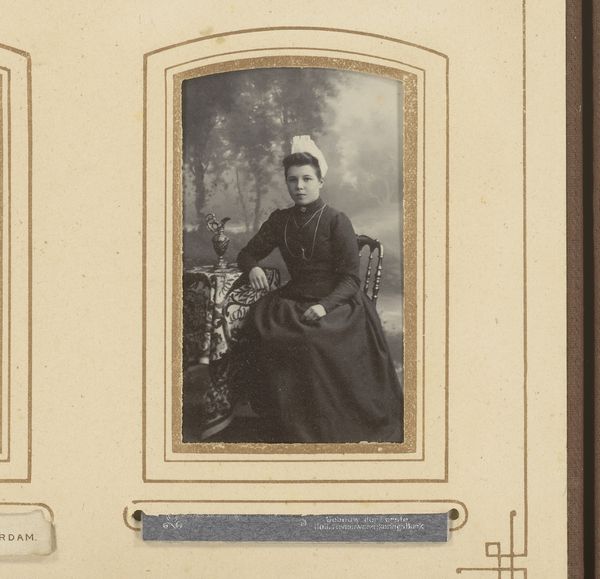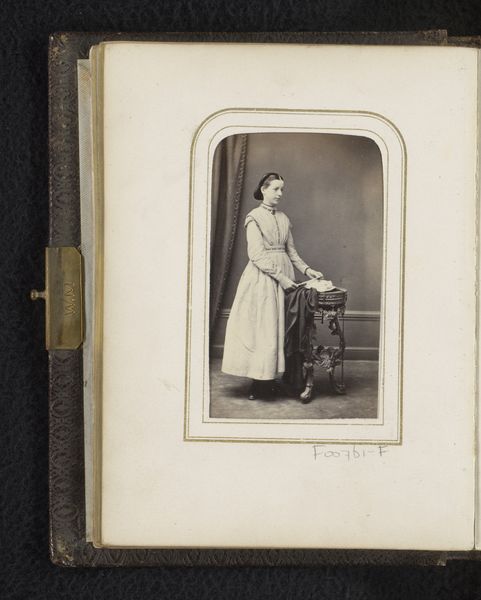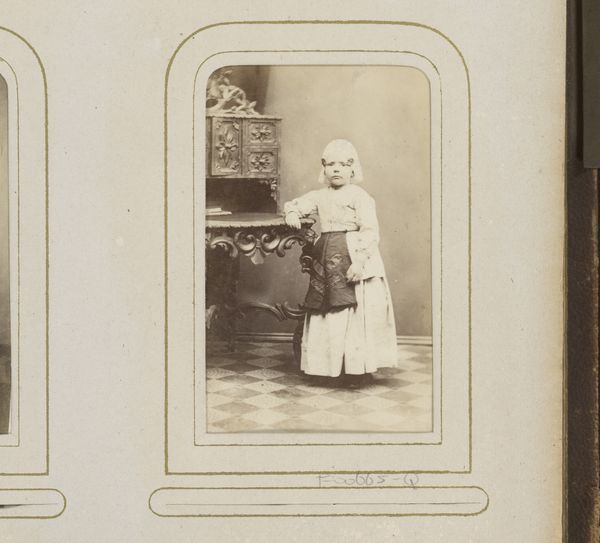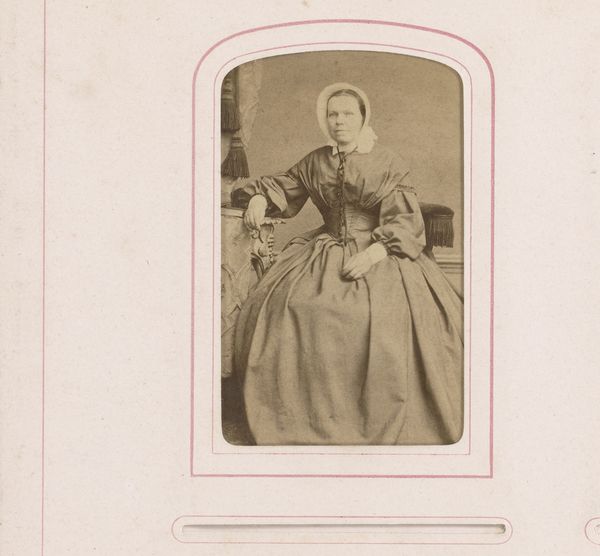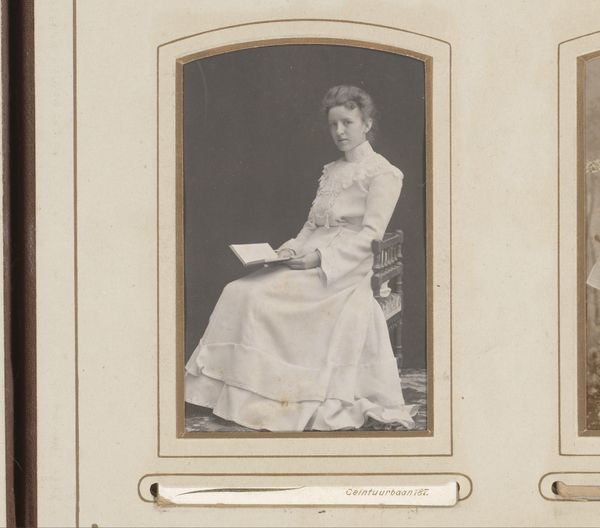
Portret ven een zittende dienstbode met een kat op schoot 1890 - 1910
0:00
0:00
photography
#
portrait
#
charcoal drawing
#
charcoal art
#
photography
#
framed image
#
genre-painting
#
realism
Dimensions: height 84 mm, width 51 mm
Copyright: Rijks Museum: Open Domain
Curator: This is a photograph dating from 1890 to 1910 titled, "Portret ven een zittende dienstbode met een kat op schoot," which translates to "Portrait of a seated maid with a cat in her lap." It resides here at the Rijksmuseum. Editor: It’s incredibly intimate. I'm struck by how weary she looks, but with a touch of quiet dignity, even contentment. Her eyes hold a lifetime of stories, or perhaps just the longing for rest in this moment. The cat seems a soft respite. Curator: Indeed. Cats often symbolize domesticity and comfort, but also independence and hidden knowledge. The way she holds the cat – it's not possessive, more like a shared understanding. The photographic medium is key too. Photography, in its early days, had a strong association with capturing reality but it also allowed new kinds of portraiture, outside the domain of wealth. Editor: Absolutely. And placing it within that socio-historical context of photographic portraiture expands its narrative. This image humanizes a member of the working class, which provides representation and an opportunity to see past the power dynamics embedded in servitude. The photo isn't overly stylized either; her posture, the slight disarray...it emphasizes an everydayness that combats the historical erasure of working-class lives. Curator: There is such authenticity, in that vein. We see a sitter positioned to emphasize aspects of genre painting, realism as well. What I think is incredibly striking is how universal and timeless those themes resonate even today. The quiet moments of solace in our routines. The complexities of life behind closed doors. This photograph is more than just an image; it's an archive of a lived experience. Editor: It prompts necessary conversations. What was her life like? What dreams did she harbor beyond the walls of service? And in what ways are those struggles reflected in modern class dynamics? A quiet yet profound rebellion through simply bearing witness. Curator: A single frame speaks volumes, continuing to ask those questions even now. Editor: Yes, history is very rarely still and muted.
Comments
No comments
Be the first to comment and join the conversation on the ultimate creative platform.
